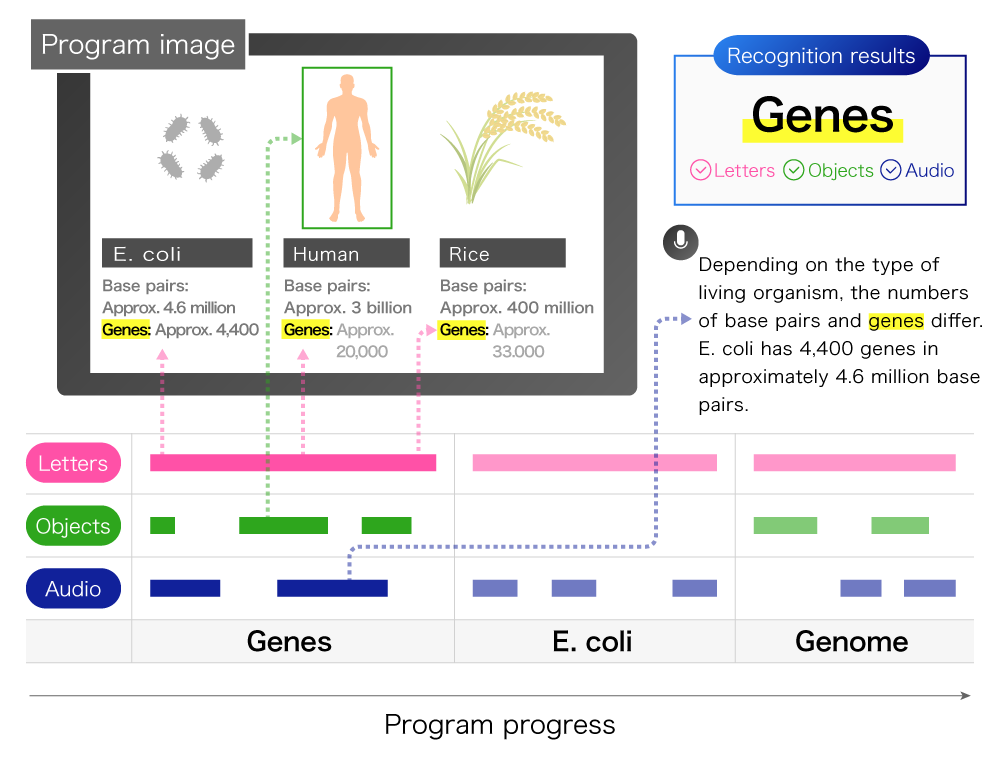In the future, all content on the internet will be connected in meaningful ways to a tremendous knowledge network. Broadcasting content will be useful in many more scenarios through links to a variety of information. Viewing content will allow people to become more curious, learn new things, and open up new worlds.
Research and development of content data linking technology that builds user interest with the meaningful connection of content
Sato Soichi, Internet Service Systems Research Division,
NHK Science & Technology Research Laboratories
Our research goal is to connect NHK’s information with external information centered on Knowledge Data to present a wide array of content and information to users. Currently, our research is carried out under the theme of education. We have prototyped a system to present content that can be used as review material for NHK High School Course content. Actual students are using the prototype system, and we are evaluating and analyzing content presentation using Knowledge Data.
Knowledge Data was formatted so relationships between words could be automatically processed by software and applications. This technology helps users find programs that expand individual interests, allowing people to make new discoveries. Currently, we are testing under the theme of education whether or not more highly related programs can be discovered by tracing Knowledge Data from keywords in programs instead of simple key word searches.

We have been working on research that connects TV programs and Knowledge Data on the internet seamlessly. People, objects, and landscapes that appear on TV programs are automatically recognized and information is provided based on the context and flow of the images in the program, according to the situation and interest of the viewer. Someday, all types of information may be able to be presented. Not just what depends on our vision and hearing, but also what relies our senses of smell, touch, and taste.

Example of processing to extract knowledge from program images, audio, or subtitles, etc.